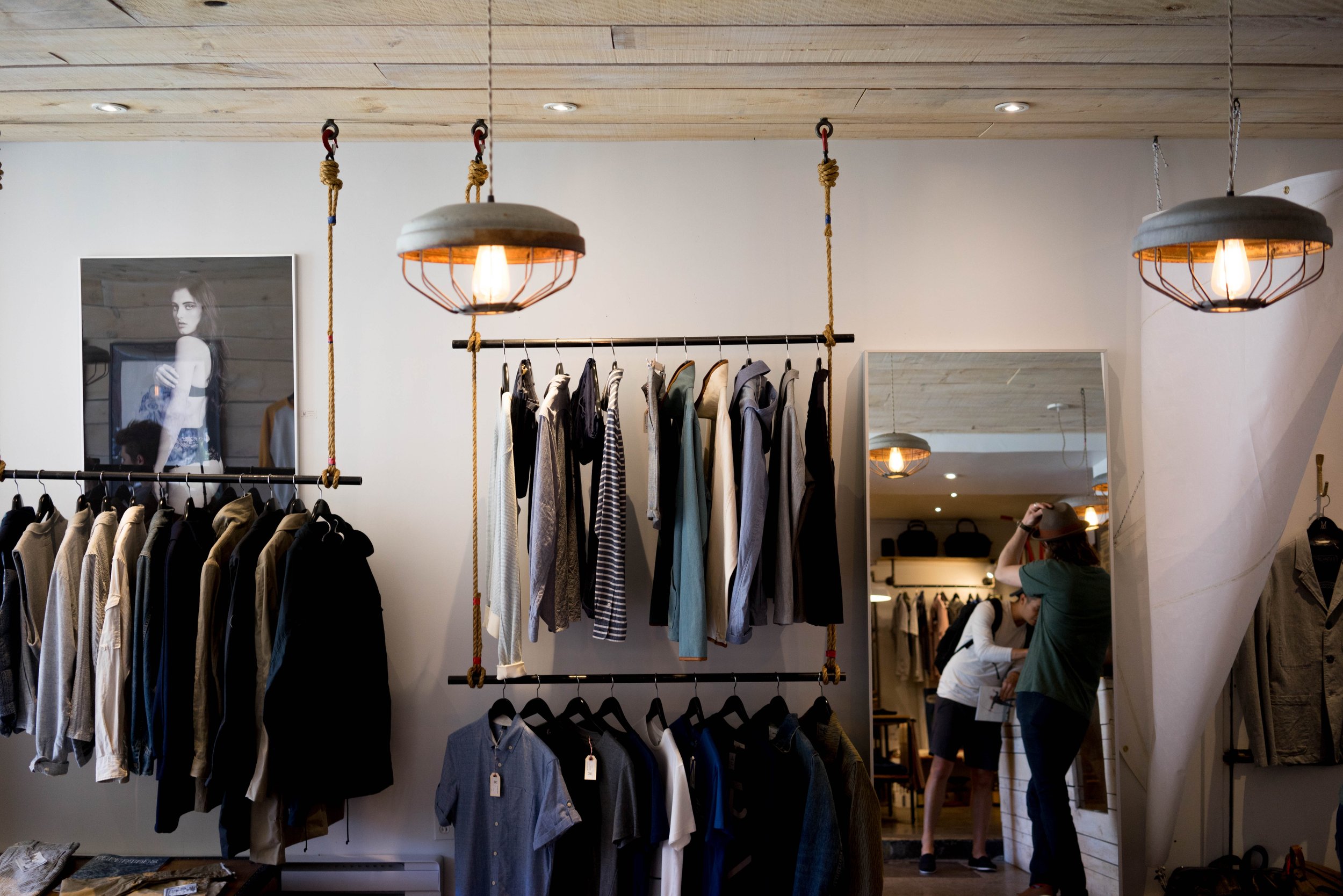Unveiling the Keys Behind Economical Boutique Fashion
Unveiling the Keys Behind Economical Boutique Fashion
Blog Article
Exploring the Development and Impact of Garments on Modern Fashion Trends
The evolution of apparel has actually dramatically affected modern style trends, combining historic criteria with innovative innovations. Renowned numbers like Coco Chanel and Yves Saint Laurent reinvented the fashion industry by introducing principles that prioritize comfort and accessibility, which proceed to reverberate today.
Historical Fashion Influencers
In the tapestry of fashion background, specific numbers have actually left an indelible mark, forming the fads and styles that specify whole periods. Coco Chanel, a revolutionary developer, redefined females's style by presenting comfy, stylish apparel that departed from restrictive bodices. Her legendary Chanel match and little black gown have actually become classic staples in wardrobes worldwide. Christian Dior's post-war "New Look" in 1947, with its event of womanhood through full skirts and cinched waists, marked a return to opulence and has actually continued to influence designers.
Elsa Schiaparelli is one more pivotal number, renowned for her progressive designs that incorporated surrealist art, collaborating with Salvador Dalí to create wayward items that challenged standard appearances. Her cutting-edge use color and strong patterns resounds in modern style. Yves Saint Laurent, meanwhile, equalized haute couture with prêt-à-porter collections, bringing runway designs to the masses and establishing a criterion for modern-day ready-to-wear lines.
These visionaries, to name a few, not only revolutionized fashion in their times but additionally established enduring fads that resonate in today's garment industry, providing a foundation upon which modern developers remain to construct and innovate. Their traditions emphasize the importance of creative thinking and daring in fashion's ever-evolving narrative.
Technical Advancements in vogue
In the middle of the vibrant landscape of the fashion sector, technological developments stand at the forefront of innovation, reshaping how developers produce and consumers involve with style. The integration of 3D printing has actually reinvented design procedures, making it possible for developers to trying out complicated frameworks and lasting materials that were previously inconceivable. This innovation assists in quick prototyping, reducing waste and quickening production times.

Smart textiles, embedding innovation right into textiles, are also changing the sector. Developments like temperature-regulating and self-cleaning materials offer enhanced capability and convenience. Wearable innovation, including attributes like fitness monitoring and interaction, includes a brand-new measurement to style, combining visual appeals with practicality.
Social Shifts and Style
As technological advancements continue to improve the apparel industry, cultural shifts are just as significant, redefining design and consumer preferences. In current years, the increase of social media sites systems has actually increased the circulation of international fashion trends, permitting diverse cultural impacts to converge and coexist. This digital interconnectivity has actually promoted the rapid exchange of ideas, bring about an extra eclectic and inclusive interpretation of style that reflects the multifaceted nature of contemporary society.
Social awareness and recognition have official source prompted designers to attract ideas from a more comprehensive spectrum of historical and ethnic contexts, integrating conventional concepts with modern aesthetic appeals. This combination has led to style that resonates with a bigger target market, promoting a feeling of identity and belonging across different demographics. In addition, the boosting demand for personalization has driven brand names to offer adjustable alternatives, making it possible for customers to express uniqueness while mirroring their social heritage.
Additionally, moving societal values have impacted fashion, with inclusivity and variety coming to be central themes. The industry has begun to accept models and influencers of various physique, ethnic cultures, and sex identifications, tough traditional beauty requirements. This change underscores the power of cultural changes in shaping the future of fashion, as style ends up being a much more authentic expression of personal and cumulative identification.
Sustainability and Modern Style
While the fashion industry continues to progress, the critical for sustainability has ended up being increasingly immediate, affecting contemporary layout practices. The rise of sluggish style, which highlights top quality over amount, encourages customers to spend in classic pieces instead than transient fads.
Additionally, modern-day layout is identified by its technology in lessening waste and advertising circularity. This strategy not just alleviates ecological impact yet likewise enhances the social obligation of style homes.

Future Trends in vogue

Sustainability will proceed to be a driving force in forming future fashion patterns. The sector is significantly embracing green products and ethical production approaches, replying to a growing customer demand for liable methods. Technologies such as bio-fabricated materials and closed-loop recycling systems are readied to redefine how garments is created and taken in, decreasing ecological effect while maintaining style and top quality.
Social shifts, consisting of the surge of inclusivity and variety, will additionally play a pivotal role. As society ends up being much more familiar with social concerns, style is expected to become a system for expression and change. Developers will likely concentrate on producing collections that show a wider variety of identifications and experiences, championing representation and availability.
Conclusion
The evolution navigate to this site of clothing dramatically impacts modern style fads, where historical influences merge with contemporary designs. This recurring development emphasizes style's function as a mirror to social worths and technical innovation, recommending a future rich with technology and inclusivity.
The development of clothes has significantly influenced modern style fads, merging historical precedents with innovative developments.In the middle of the vibrant landscape of the fashion sector, technical developments stand at the center of advancement, reshaping just how developers produce and customers involve with style.While the fashion market proceeds to progress, the vital for sustainability has actually become increasingly immediate, affecting contemporary design methods. As sustainability comes to be embedded in modern style, it leads the way for a much more liable and conscious style sector.
The evolution of clothing dramatically affects modern-day style fads, where historical influences merge with contemporary designs.
Report this page